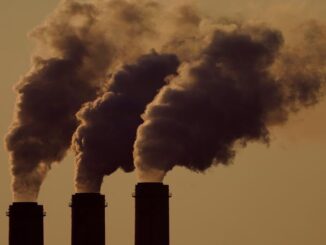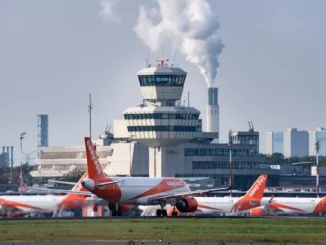
Welcome to Energy Daily, our guide to the energy and commodities powering the global economy. Today, Senior Reporter Kevin Crowley examines whether new investments in carbon capture are enough to make it a serious weapon against climate change. Bloomberg’s Zero podcast discusses why Hollywood A-listers are rushing to star in climate shows. To get this newsletter in your inbox, sign up here.
It’s been a good few weeks for carbon capture investment in the US: Exxon Mobil Corp. agreed to buy the country’s biggest network of carbon dioxide pipelines for $4.9 billion; the Department of Energy committed $1.2 billion to sucking CO2 out of the atmosphere; and Occidental Petroleum Corp. struck a deal to buy a Canadian direct air capture startup for $1.1 billion.
But the jury is still out on whether the technology, which promises to keep the benefits of fossil fuels without the emissions, will ever become a serious weapon in the fight against climate change. Critics say carbon capture is just a way to make people feel good about using fossil fuels while providing minimal benefit to the environment.
Big Oil has past form on this count. The industry has long championed recycling as a way of perpetuating the use of plastic, which is made from petrochemicals. But even after billions of taxpayer dollars and four decades of public awareness campaigns, less than 10% of plastic waste is recycled in the US.
Carbon Capture’s Crucial Role in Net-Zero Industry
The absolute impact may be highest in the power sector, but carbon capture could negate a higher share of industrial emissions
Note: Depicts BNEF’s Net Zero Scenario, a pathway to net-zero emissions by 2050.
For the last 15 years, carbon capture and sequestration has been long on promise and short on delivery, despite large taxpayer support. Most projects failed to overcome the simple economic fact that it’s cheaper to release CO2 into the atmosphere than paying to clean it up. President Joe Biden’s Inflation Reduction Act, which includes generous tax incentives for CCS, aims to bridge that gap, dovetailing with the market for carbon offsets.
The two projects funded by the DoE this month — backed by investors including Occidental and Climeworks AG — will only remove 2 million tons of CO2 a year — less than 1% of US energy-related emissions. While the main goal is to advance the technology and reduce costs, it illustrates the sheer scale of the challenge ahead.
By the DoE’s own numbers, US carbon capture has to scale up between 20 and 90 times to reach Biden’s goal of a net zero economy by 2050, costing $100 billion by 2030 and $600 billion by 2050.
The DoE calls this a “massive investment opportunity.”
Shareholders may take a different view. But if the fossil-fuel industry is serious about carbon capture, then it needs to start thinking about how to stump up the cash over the long term.
–Kevin Crowley, Senior US Oil Reporter
Chart of the day
Pipeline Imports Set for Least Growth in China Gas Supply This Winter
Forecast year-on-year change in China’s gas supply
Note: Winter is defined as the period from October 1 to March 31. Figure shown for the 2023-24 winter is BNEF’s base-case forecast, in which normal weather conditions are based on the 10-year seasonal average.
China’s pipeline imports in the coming winter may see the least growth among all gas supply sources, based on BloombergNEF estimates. Flows from Central Asia, especially Kazakhstan and Uzbekistan, pose the biggest supply uncertainties. Domestic gas output is set for steady 6% year-on-year growth. Liquefied natural gas flows into China are estimated to reach 37.7 million metric tons this winter, a 12% increase from last winter.
Today’s top stories
Oil steadied after a three-day drop spurred by concerns over the Chinese economy and the possibility of even tighter US monetary policy. Citigroup Inc. says shorting crude into next year “makes sense” given the likelihood of soft demand and robust supply.
The UK’s annual renewable energy auction may not include offshore wind for the first time since the system for awarding subsidies began almost a decade ago, posing another potential setback to the government’s net zero targets.
Temperatures are rising across the continent as wildfires destroy parts of the Spanish island of Tenerife, and Germany issued red alerts for widespread thunderstorms. Strong and expansive heat is anticipated for the rest of this week, according to Maxar Technologies Inc.
JSW Steel Ltd. is looking to form a consortium to bid for a majority stake in Teck Resources Ltd.’s steelmaking coal business, people with knowledge of the matter said, potentially rivaling an $8 billion offer from commodities giant Glencore Plc.
Consumers are taking the wheel of the energy transition, with green investments by households overtaking the money spent by corporations, writes Bloomberg Opinion’s David Fickling.
Best of the rest
- This Q&A in Carbon Brief looks at the trajectory of China’s nuclear development — it’s expected to have the largest fleet by 2030 — and what’s driving the nation’s strategy.
- Have we reached peak coffee? These Financial Times infographics show that demand is expected to double by 2050, and farmers may not be able to fill all those cups.
- The BBC’s Climate Question podcast discusses the recent spate of global temperature records with Jim Skea of the Intergovernmental Panel on Climate Change.



